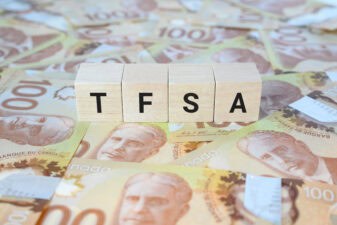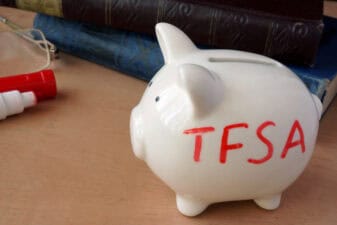The Tax-Free Savings Account (TFSA) continues to rise in popularity, as evidenced by the 9.95% year-over-year increase in average annual TFSA contributions. However, in the 2019 pre-coronavirus environment, Canada Revenue Agency (CRA) data showed that only 20% of Canadians have maxed out their yearly limits.
For TFSA proponents, underutilizing the unique investment vehicle is a common mistake. Thus, the CRA data indicates that 80% of TFSA users are not taking full advantage or maximizing the benefits of tax-free money growth. The accumulated amount is now $75,500 from $63,500 two years ago regarding the maximum contribution room.
TFSA update
Bank of Montreal (TSX:BMO)(NYSE:BMO) conducts an annual TFSA survey. Its 2020 survey results reveal that many Canadians were able to increase their overall contributions during the pandemic. According to BMO Economics, the 10.6% year-over-year increase in savings in Q3 2020 made it possible. Households had healthy savings, and BMO estimates excess savings to be around $150 billion.
The same survey shows that 68%, or about one-third of respondents, have TFSAs. Moreover, 72% of millennials and Canadians over 55 are most likely to be TFSA users. The average amount of holding in 2020 was $30,921, or 9% higher than in 2019.
Double mistake
The TFSA’s popularity is unquestionable because of its flexibility and one-of-a-king features. Unfortunately, and popularity aside, 38% of TFSA users have cash as their primary investment. Another intriguing figure is that more than half (51%) of Canadians did not know that you should hold cash and at least one other type of investment, like stocks, in a TFSA.
Your TFSA is an investment vehicle, which means the money in the account should be working, not idle. Storing mainly cash in a TFSA isn’t advisable, because it makes nothing. The better strategy is to hold income-producing assets such as bonds, mutual funds, GICs, ETFs, and stocks in your TFSA.
The idea is to grow your savings and meet short- or long-term financial goals. Furthermore, TFSA balances swell faster, because all interest, capital gains, or dividends earned inside the account are 100% tax-free. TFSA withdrawals are not subject to tax.
No-nonsense core holding
Since we’re on the topic of tax-free money growth, investing in a blue-chip asset like BMO is the right way to go. Canada’s fourth-largest lender was the first company ever to pay dividends. The dividend track record is impressive, as this $66.45 billion bank hasn’t missed paying dividends for 192 years.
Let’s assume your available TFSA contribution room is the max ($75,500) and you can contribute the same account. At $102.74 per share, BMO pays a 3.36% dividend. Thus, your capital will compound to $146,216.70 in a 20-year investment horizon. By then, you should be receiving $1,228.22 every quarter. BMO is a buy-and-hold stock on the TSX. You can purchase shares today and never sell again.
Remember, unlike the Registered Retirement Savings Plan, you can use TFSA past the age of 71. With BMO as your anchor or core holding, the quarterly income could be for life. If you need more justification, BMO’s total return in the last 48 years is 27,045.95% (12.3% CAGR). The dividend pioneer is indeed a no-nonsense investment for TFSA users.
Improve your financial health
Canadians can improve their financial health in 2021 and beyond. The TFSA is the most flexible investment and saving option available to them.







